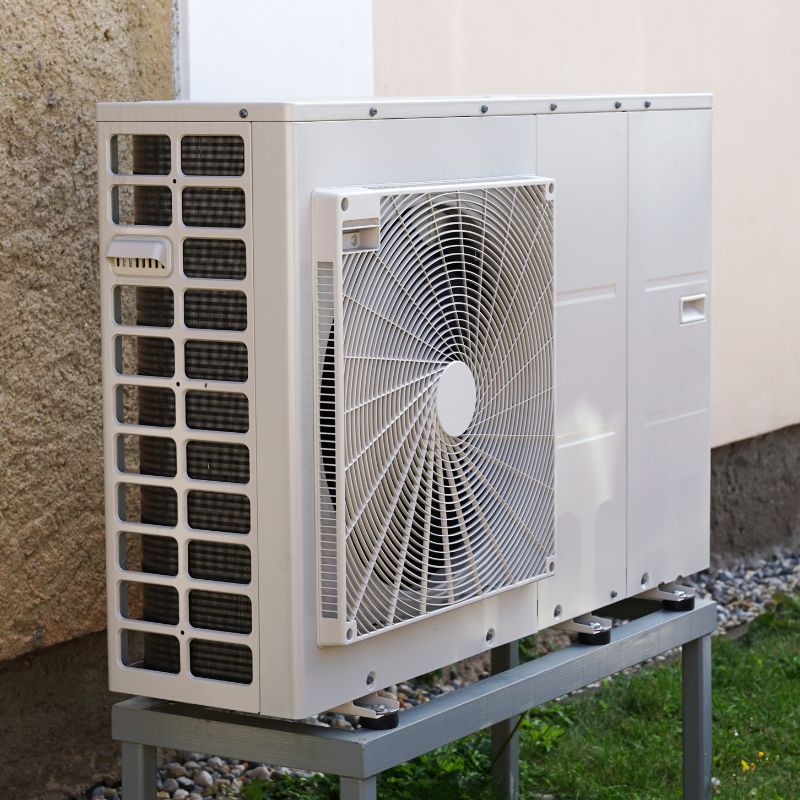Variable Refrigerant Flow (VRF) air conditioning systems are advanced, energy-efficient HVAC technologies designed for precise climate control across multiple zones. A VRF system uses a variable-speed compressor in the outdoor unit to regulate refrigerant flow to multiple indoor units, allowing each space to operate independently. Unlike traditional HVAC systems, this method uses a direct expansion system to transfer heat, resulting in substantial energy savings and comfort flexibility.
How Do VRF Systems Work?
Every VRF air conditioning system is built around three essential components: the outdoor unit, multiple indoor units, and a refrigerant piping network. Each indoor unit contains its own expansion valve, enabling independent temperature control in different zones. At its core, the variable-speed compressor adjusts the refrigerant flow rate based on real-time demands, optimising performance and reducing energy waste. Systems come in both air-cooled and water-cooled formats, depending on architectural needs.
Mechcool offers expert guidance and installation of VRF systems, including tailored configurations for unique commercial layouts. The modular design ensures scalability and adaptability in both retrofits and new builds. VRF systems operate quietly, making them ideal for noise-sensitive environments like hospitals and schools.
VRF Energy Efficiency Benefits and Performance
Compared to conventional HVAC solutions, VRF systems can be up to 50% more energy-efficient. This is mainly due to the variable-speed inverter compressor, which adjusts power usage according to heating or cooling demand. The result? Minimised energy waste and a consistent indoor temperature without drastic fluctuations.
VRF technology reduces lifecycle costs. While the initial installation cost may be higher, the operational savings quickly balance out the investment. Integration with a building automation system allows for smart climate management and energy optimisation. VRF units also eliminate duct losses, a major inefficiency in traditional HVAC setups.
Learn more about energy-saving air conditioning with Mechcool.
Types of Variable Refrigerant Flow Systems
VRF HVAC systems are available in two main types, Heat Pump and Heat Recovery, each supporting independent climate control across multiple zones.
VRF Heat Pump Systems
These air conditioning systems deliver either heating or cooling. They are best suited for buildings where consistent temperature conditions are required throughout, such as open-plan offices or schools operating on a single thermal mode.
Heat Recovery Systems
Heat Recovery cooling systems allow for simultaneous heating and cooling across different zones. A heat exchanger and inverter-controlled compressor manage refrigerant flow and direction, often repurposing heat extracted from cooling zones to warm other areas. This type is ideal for buildings with diverse occupancy or thermal needs, like hotels and mixed-use facilities, offering enhanced comfort and improved energy efficiency.

Commercial Applications of VRF systems
Commercial buildings such as hotels, office spaces, and retail environments increasingly use variable refrigerant flow systems for their flexible design and lower energy usage. The modular structure supports scalability, fitting developments that grow in phases.
From commercial building retrofits to newly constructed properties, VRF systems can meet different thermal demands. Their quiet operation and low-profile installation make them ideal for urban and high-density settings. Integration with Building Energy Management Systems (BEMS) allows coordinated control across large sites.
Find out more about our commercial air conditioning services
VRF System Maintenance Requirements
Maintenance for VRF systems is manageable. Regular inspections, coil cleaning, and system updates are required to keep the equipment performing properly. Remote system diagnostics integrated with BMS help identify issues early.
These reliable heating and cooling systems require less attention than conventional HVAC units. Their inverter-driven compressors minimise cycling, which lowers component wear and energy peaks. At Mechcool, we provide regular maintenance plans to support long-term operation.
VRF vs Traditional HVAC System Comparison
| Feature | VRF System | Traditional HVAC |
| Energy Efficiency | Up to 50% better | Lower |
| Zoning Capabilities | Multi-zone | Limited |
| Installation | Ductless/minimal ductwork | Extensive ductwork |
| Control System | Smart/automated | Manual or semi-automated |
| Initial Cost | Higher | Lower |
| Operating Cost | Lower over time | Higher long-term |
| Noise Levels | Quiet operation | Louder compressors |
| Scalability | High | Limited |
VRF systems outperform traditional HVAC systems in efficiency, climate control, and energy management. While the starting cost is higher, the long-term operational and environmental benefits make it a worthwhile investment.
Why Choose a VRF System?
Where energy performance, comfort control, and sustainable HVAC solutions are priorities, VRF air conditioning meets the challenge. It can adapt to various environments and offers efficient performance across diverse building types.
As VRF system specialists in Sussex, at Mechcool, we offer tailored VRF services for any project stage, from system design and installation to ongoing maintenance and support. Our air conditioning experts are able to work with all current and existing systems from brands such as Toshiba, Panasonic and Daikin. With remote monitoring, modular design, and individual zoning, you’re setting up a building with long-lasting climate control.

